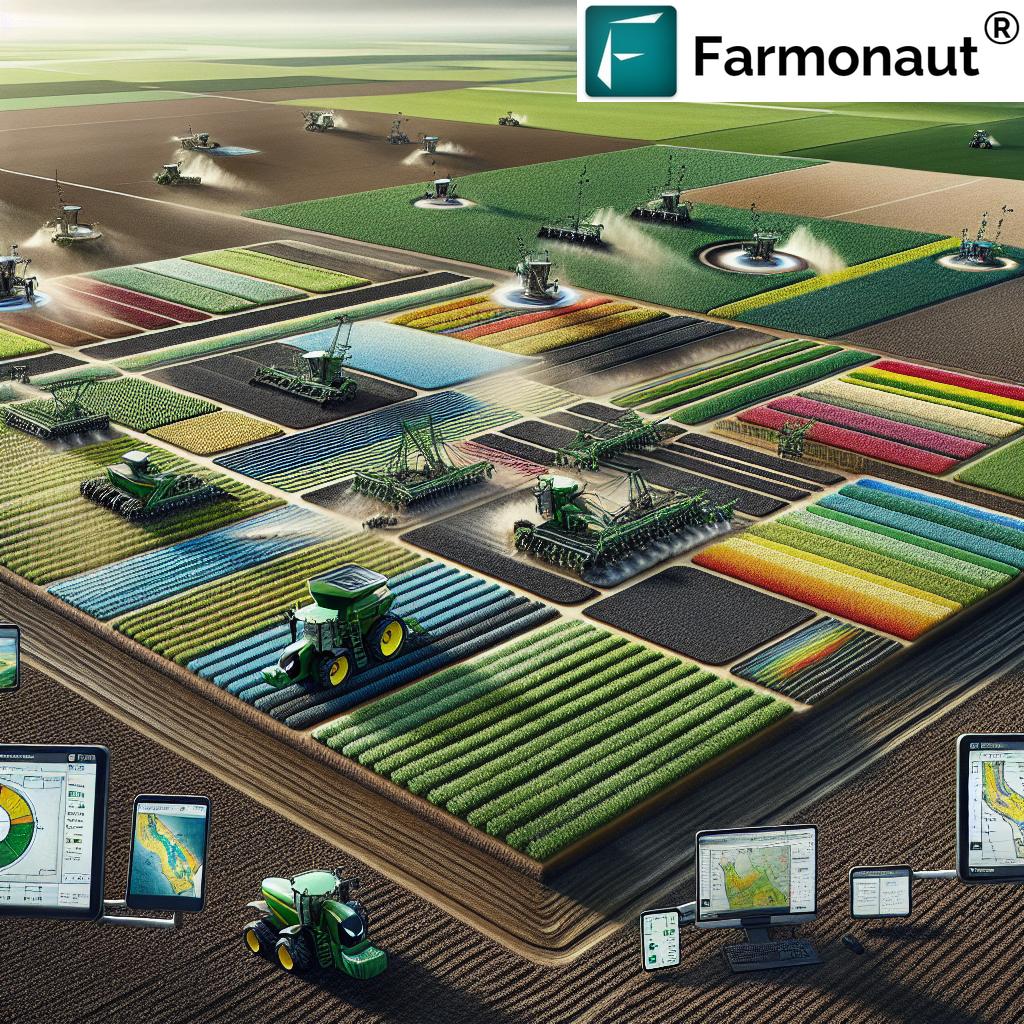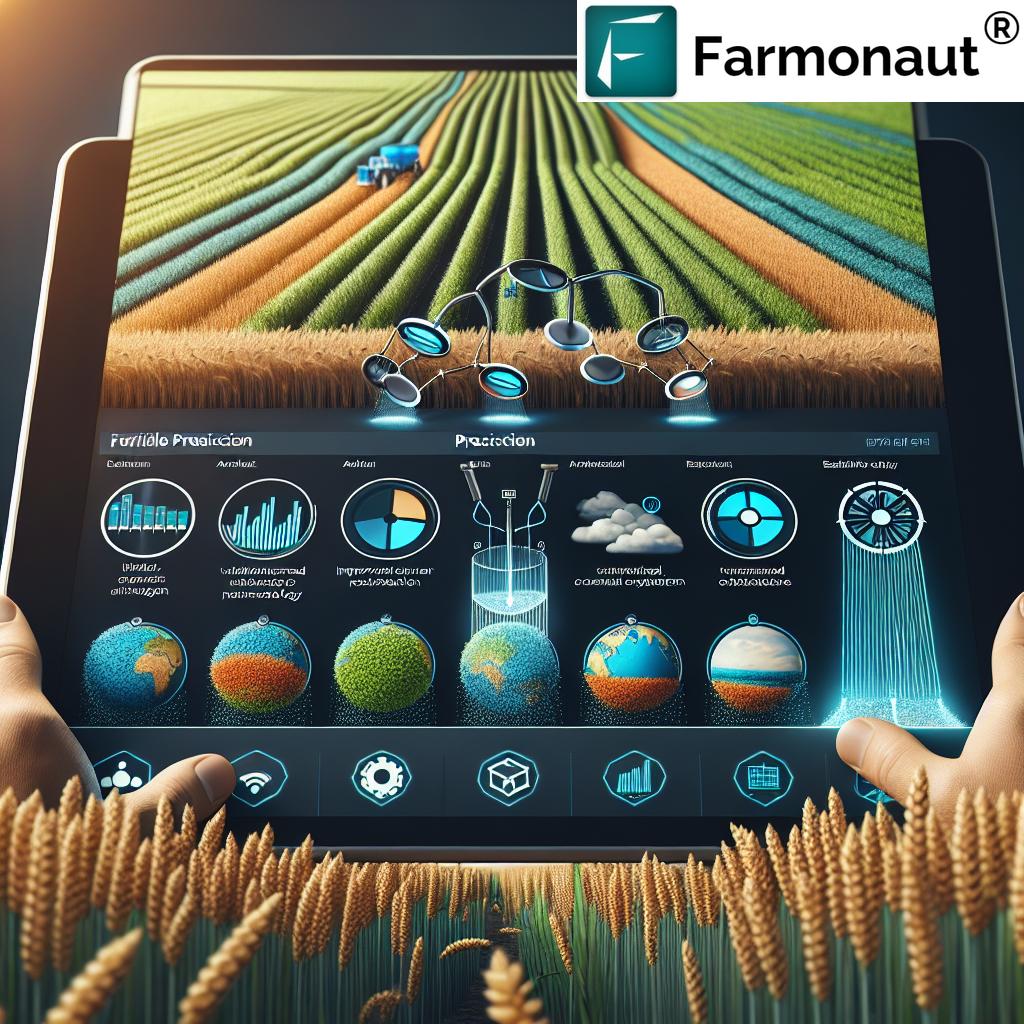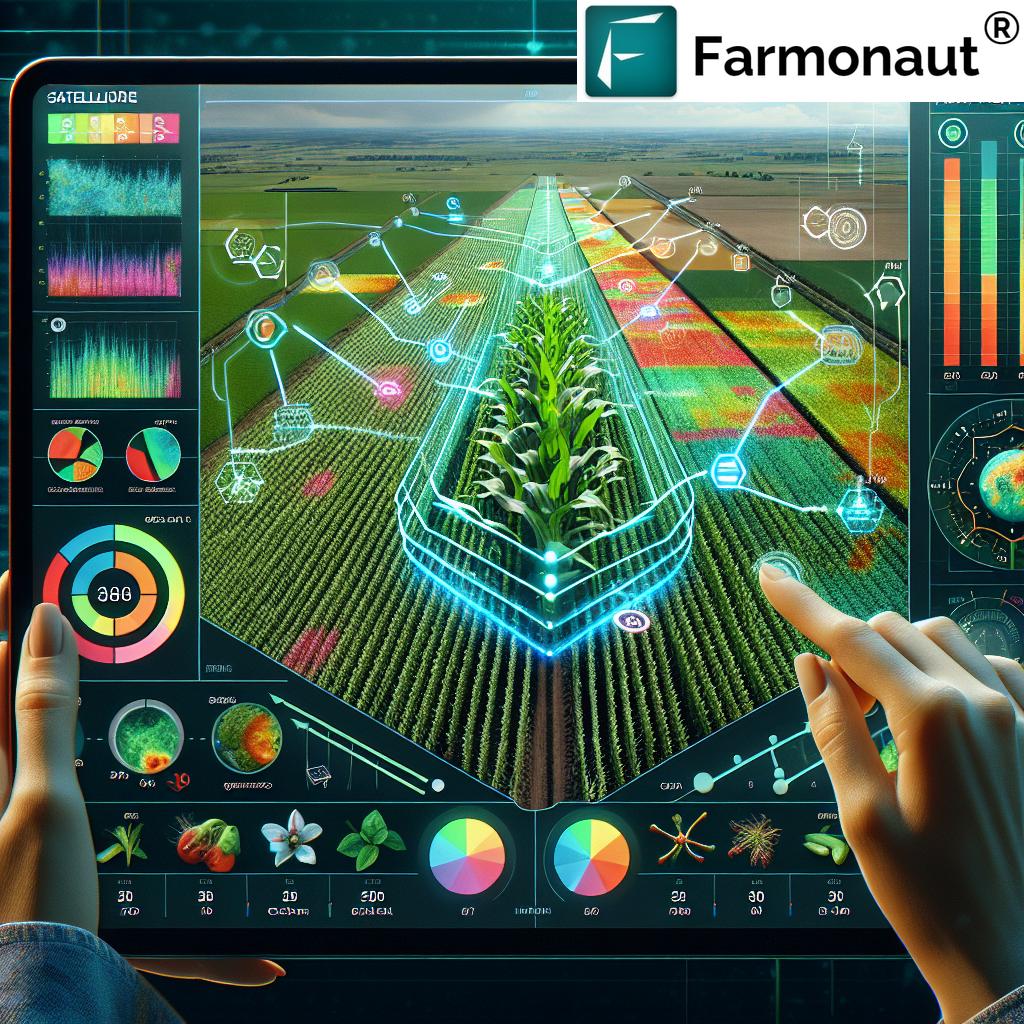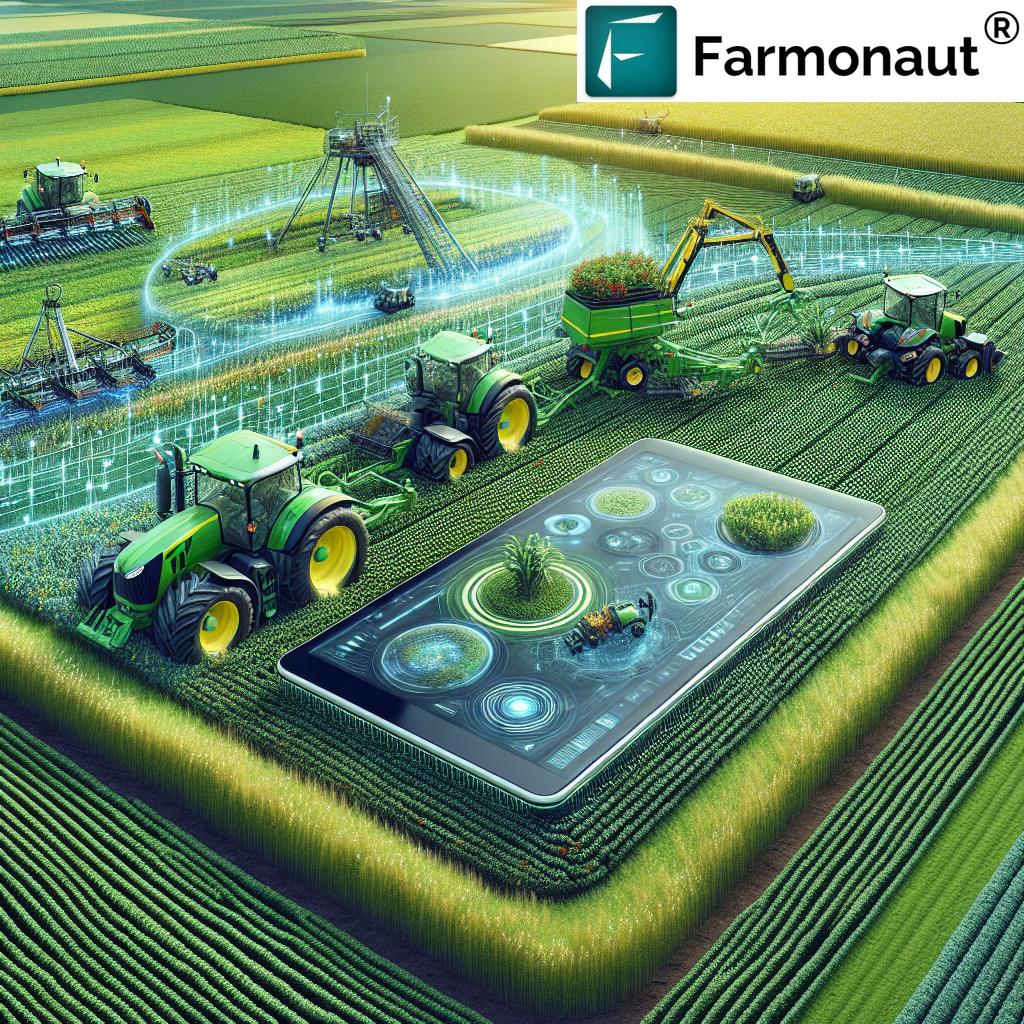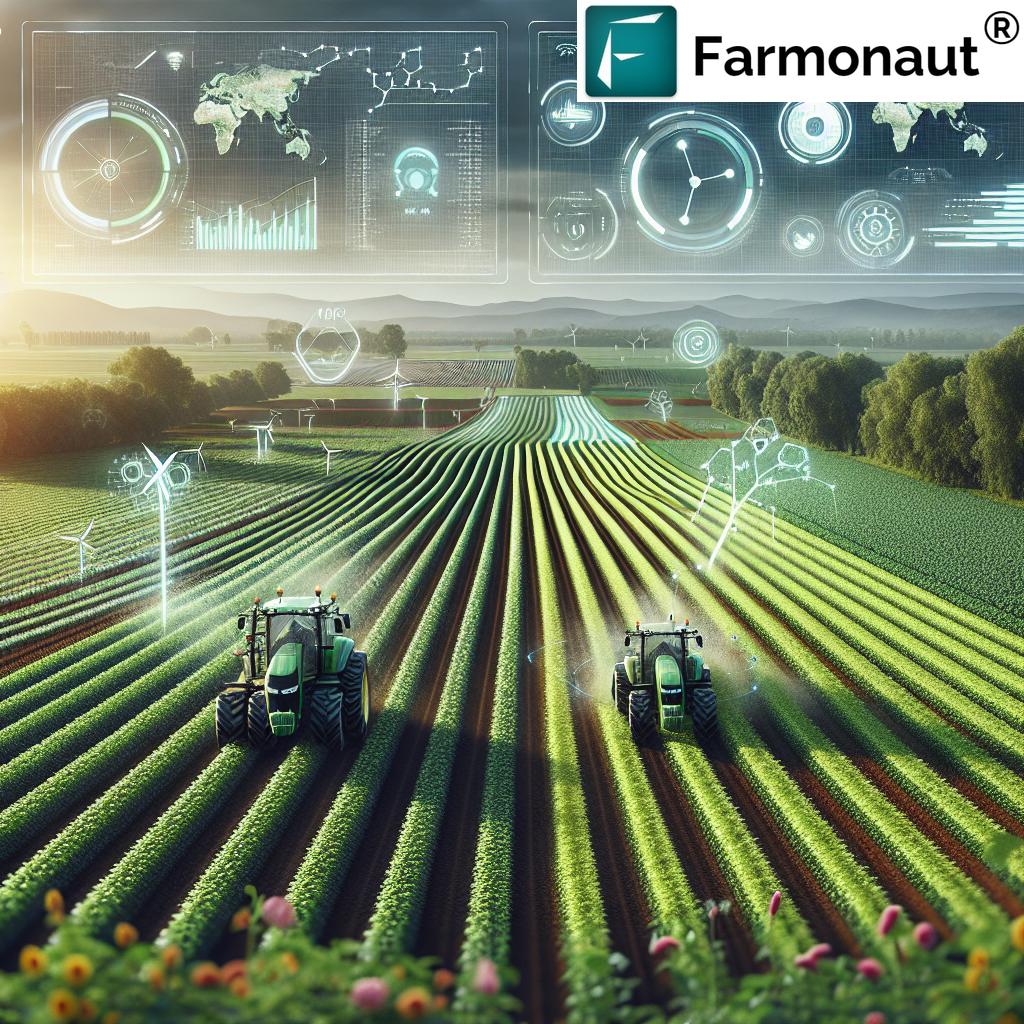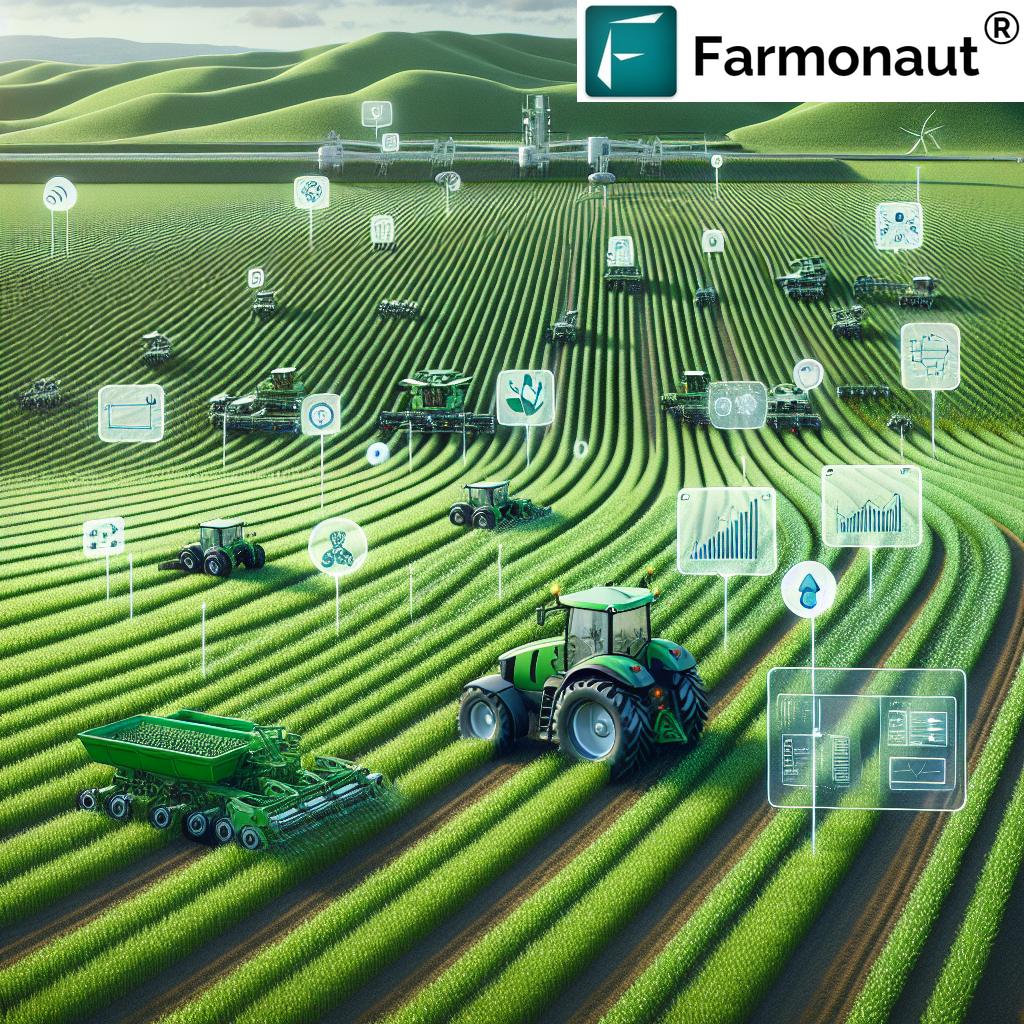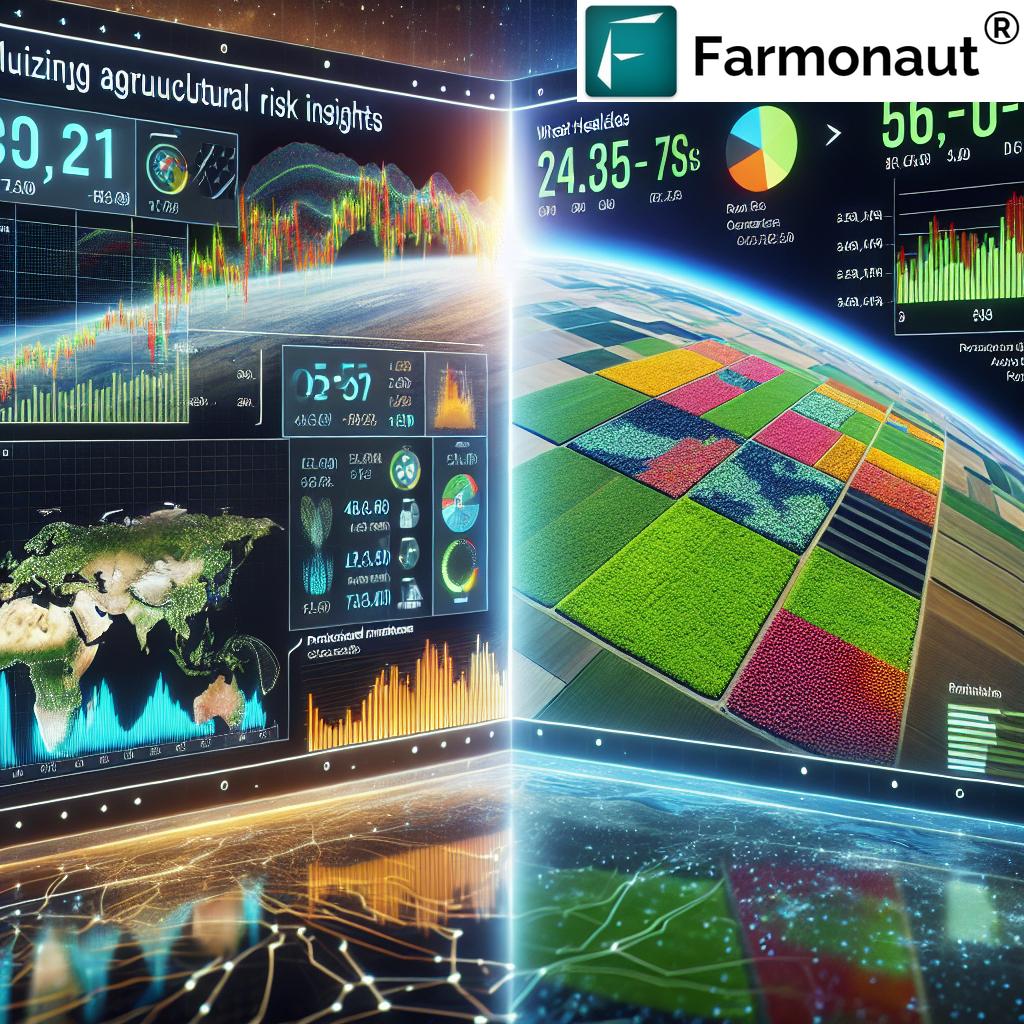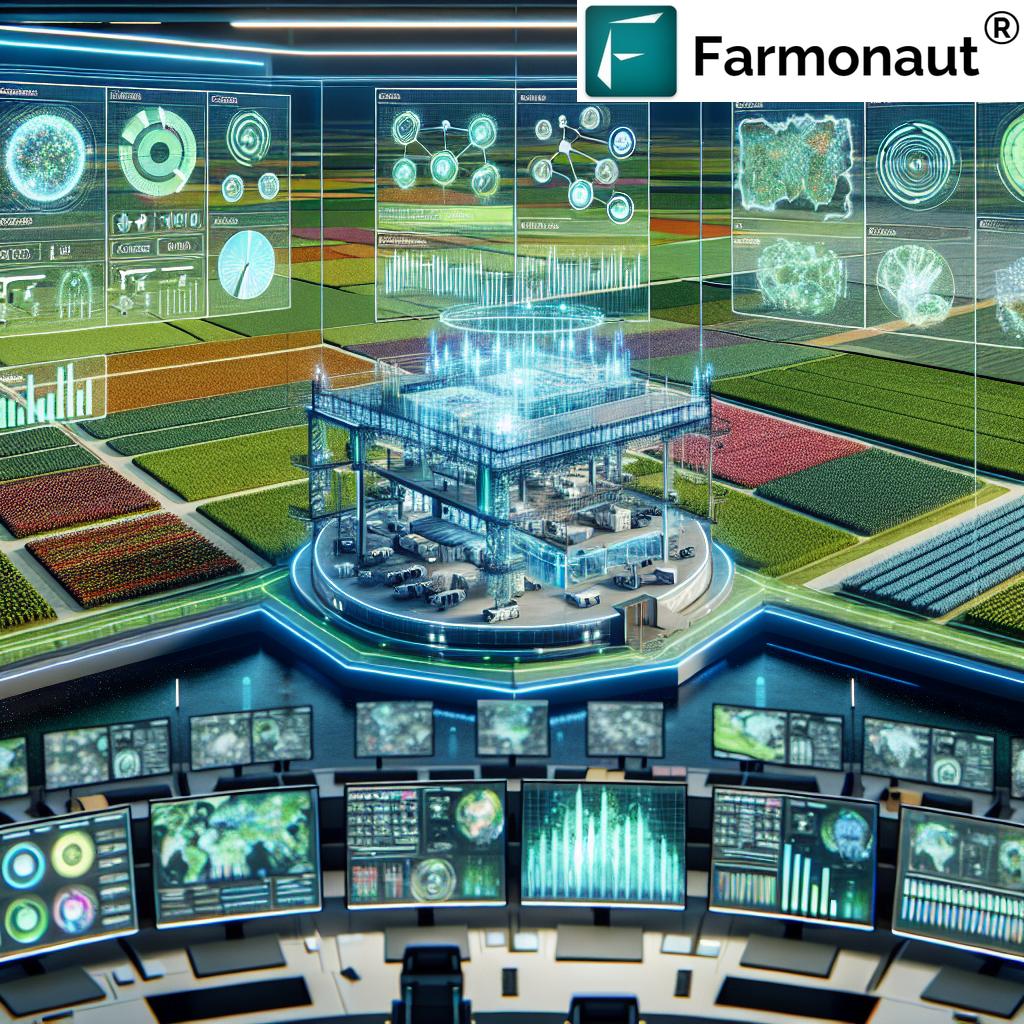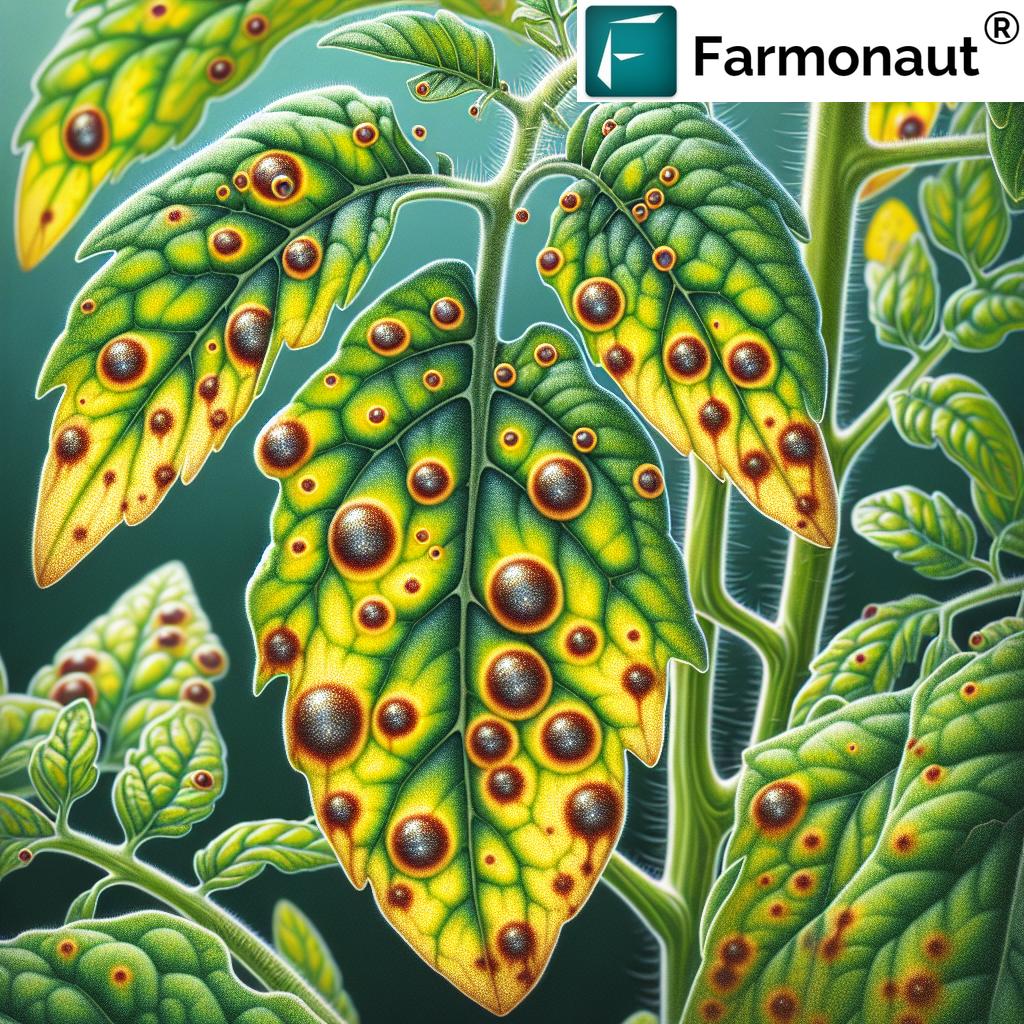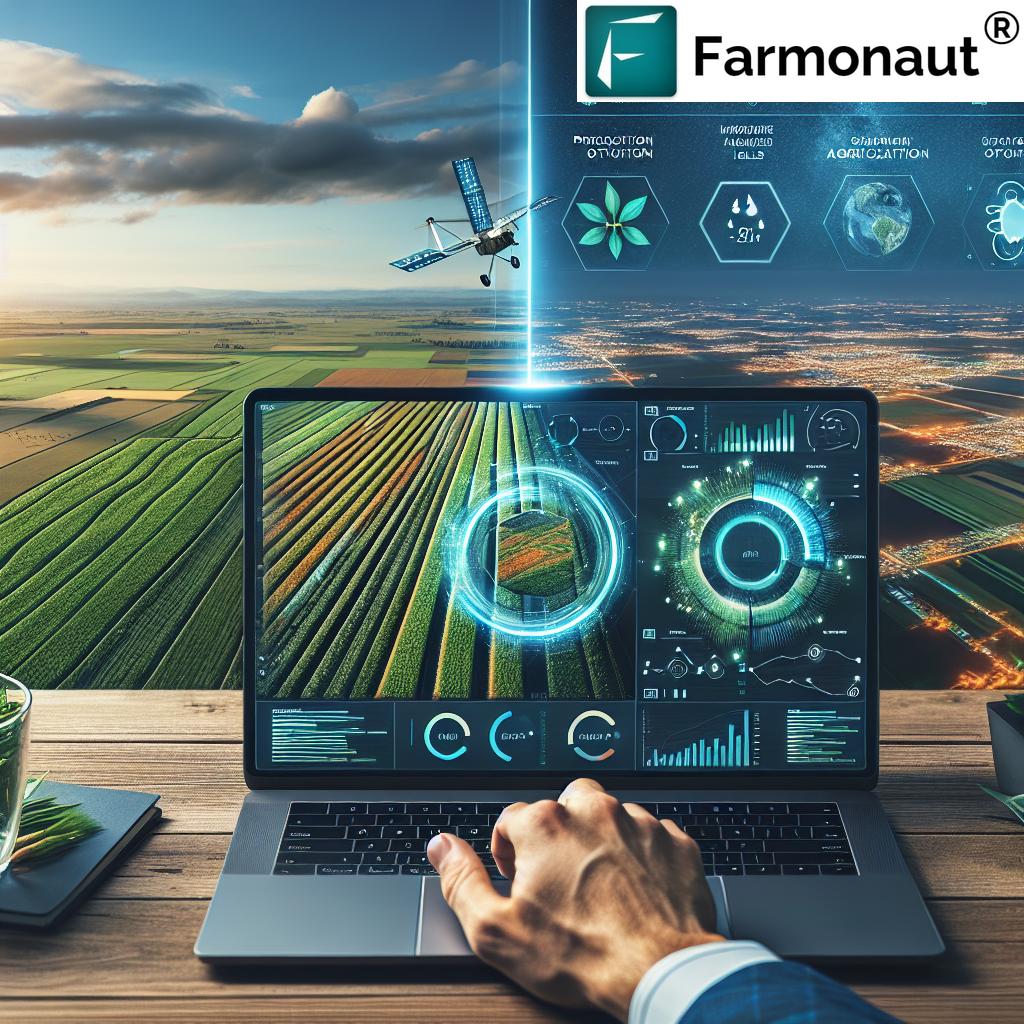“Variable rate fertilizer technology can reduce input costs by up to 15% compared to traditional uniform application methods.”
Variable Rate Fertilizer Technology Applications: 7 Benefits
Agriculture is entering a new era, powered by digital transformation and precision technology. Among these advancements, Variable Rate Technology (VRT) stands out, revolutionizing how fertilizer application is managed across our fields. Instead of relying on traditional, uniform application methods, we now have access to tailored, data-driven strategies that optimize input use, improve yields, and enhance environmental sustainability.
As we explore how variable rate technology can reshape our approach to advanced nutrient management, it’s critical to understand the foundation, practical applications, and the transformative benefits this practice brings to modern agriculture. In this comprehensive blog, we’ll uncover how data and technology empower farmers worldwide to make smarter, more sustainable decisions—leading to higher productivity, cost savings, and a positive impact on our planet.
Understanding Variable Rate Technology in Agriculture
Variable Rate Technology (VRT) refers to a suite of technologies and methods aimed at applying agricultural inputs—such as fertilizers, pesticides, and water—at varying rates across a field, rather than a uniform, one-size-fits-all approach. This precision strategy leverages advanced tools, including:
- GPS mapping and navigation (gps mapping for farming)
- Remote sensing—satellite and drone imagery
- Big data and analytics to assess field variability
- Automated control systems and smart equipment
The core idea is to analyze different factors — including soil nutrient levels, moisture content, crop vigor, and more — to create tailored prescription maps. These maps guide machines to deliver inputs only where, when, and in the quantities actually needed, reducing waste and increasing efficiency.
Why is this important?
Because fields are inherently variable. Differences in soil composition, moisture levels, nutrient dynamics, and microclimates mean that what works for one area may be excessive or insufficient for another. By using VRT, we custom-fit our resources to embrace these variations—leading to better results all-around.
VRT Applications in Fertilizer Management: Tailored, Data-Driven Soil Management
Of all input types, the data-driven soil management enabled by VRT is perhaps most impactful in precision fertilizer application. Here, the focus is on matching nutrient delivery to the unique requirements of each field zone — a crucial step for crop yield optimization and reducing nutrient runoff.
How Does it Work?
- Soil mapping and testing: Assess the soil nutrient levels and organic matter in different zones
- Remote sensing: Use satellites or drones to gather data on crop vigor and moisture
- Prescription creation: Build customized fertilizer prescription maps indicating the exact application rates needed in each area
- Application: Utilize VRT-enabled equipment for accurate, variable-rate dispensing of fertilizers
This approach not only optimizes resource use and infrastructure, but also actively minimizes the environmental impact associated with traditional one-size-fits-all methods — including costly over-fertilization that leads to runoff, leaching, and declining soil health.
7 Benefits of Variable Rate Fertilizer Technology in Agriculture
Let’s break down the key benefits that VRT brings to fertilizer management and modern farming practices. These advantages are backed by scientific studies and on-field results — offering concrete, understandable value to farmers, agribusinesses, and stakeholders committed to sustainable farming practices.
1. Improved Crop Yield and Quality
- By applying nutrients at optimal rates based on data from sensors, soil tests, and remote sensing (remote sensing), we directly enhance plant health and maximize growth potential for each part of the field.
- Research has shown that variable-rate fertilization can increase grain yields and protein content in crops like wheat, resulting in higher market value. Read more
Precision fertilizer application ensures crops get what they need, when they need it, for optimal results.
2. Input Cost Reduction and Resource Optimization
- Applying fertilizers only where necessary—guided by data-driven prescription maps—means we use less product while achieving better outcomes.
- According to studies, VRT-enabled fertilization can reduce fertilizer costs by up to 15% and significantly enhance farming profitability.See study
This efficient use of resources helps mitigate rising input costs and supports the economic resilience of our farming operations.
3. Decreased Environmental Impact
- Reducing over-application drastically minimizes the risk of nutrient runoff and leaching into water bodies – a core pillar of environmental benefits of VRT.
- Studies have documented a reduction in nitrogen emissions by over 30-45%, leading to healthier ecosystems and promoting sustainability. Source
Protecting waterways and preserving our soil for future generations.
4. Increased Nutrient Efficiency
- Better matching of nutrient supply with crop uptake, minimizing wastage and ensuring plants get exactly what they need—not more, not less.
- This leads to improved nutrient use efficiency, a foundation for sustained field productivity and beneficial for the environment.
5. Enhanced Profitability & Market Value
- Through higher yields and improved crop quality, farmers achieve stronger harvests and higher commodity prices.
-
Lower input costs thanks to precise fertilizer use drive net profits even higher.
For winter wheat, studies noted a potential income boost of up to 20% compared to traditional fertilization methods.
6. Minimized Runoff and Soil Degradation
- Site-specific fertilizer delivery means nutrients are retained in the root zone for plant uptake, rather than leaching away or washing into local streams.
- This supports soil health and boosts long-term farm sustainability.
7. Greater Field Uniformity and Consistency
- Uniformity in crop growth and maturity makes for easier management, more predictable harvests, and more stable income.
- Consistent, targeted input applications reduce variability in plant health, leading to increased field performance and efficiency.
“Data-driven fertilizer application can increase crop yields by as much as 7% through precise nutrient management.”
Implementing Variable Rate Fertilizer Technology: A Stepwise Approach
Successfully integrating VRT and customized fertilizer prescription maps into our agronomic workflows takes careful planning and systematic action. Here’s a roadmap to bring variable rate technology in agriculture to life on your farm or agri-enterprise:
1. Data Collection: The Foundation of Precision
- Utilize a combination of soil tests, remote sensing (satellite, drone, or UAV), and on-field sensors to gather robust datasets.
- Platforms like Farmonaut can play a vital role—providing satellite-based crop health maps, soil moisture data, and weather trends, enabling advanced, data-driven decision making.
Farmonaut’s android, iOS, and web platform helps us monitor real-time field variability, allowing us to identify zones with differing requirements—directly supporting the implementation of VRT.
2. Data Analysis: Defining Management Zones
- Apply analytics and mapping tools to review data patterns and field variability.
- Draw boundaries to create management zones with distinct nutrient needs.
- Farmonaut’s Large Scale Farm Management tools support field mapping and data-driven management, essential for complex multi-zone operations.
3. Prescription Mapping: Precision Starts Here
- Develop fertilizer prescription maps that specify variable input rates for each management zone.
- Export these for use in compatible VRT equipment.
4. Equipment Calibration and Integration
- Ensure spreaders, sprayers, and applicators are GPS-enabled and properly calibrated to adjust rates automatically.
- Integrate Farmonaut’s data through API for seamless workflow and monitoring – learn more at Farmonaut API and Developer Documentation.
5. Application, Monitoring & Adjustment
- Apply fertilizers as per the mapped prescriptions during optimal field conditions.
- Track crop response with remote sensing and yield monitoring — adjusting as needed for future applications.
- Farmonaut’s Carbon Footprinting tools can help monitor emissions, supporting certification and compliance goals.
Farmonaut: Advancing Precision Fertilizer Application Globally
With innovative features and a mission to democratize precision agriculture, Farmonaut’s platform bridges the gap between traditional farming and high-tech crop management. By making satellite-based tools and real-time advisory accessible, Farmonaut empowers farmers of all scales—whether you’re in India, Europe, Africa, or beyond—to boost yields, cut costs, and farm more sustainably.
- Crop Health Monitoring: Get real-time satellite imagery, NDVI indices, and soil moisture insights.
- AI Advisory with Jeevn: Receive personalized recommendations on nutrient, irrigation, and pest management.
- Blockchain-Based Traceability: Ensure supply chain transparency—from field to market—with Farmonaut Traceability.
- Fleet & Resource Management: Optimize machinery operations and reduce operational expenditures. Learn more about Fleet Management for agri-enterprises.
- Crop Loan & Insurance Support: Facilitate crop loans and accurate insurance verification with Farmonaut’s crop loan and insurance solutions.
- Scalable, Mobile-Ready Platform: Use apps on Android, iOS, or directly in your web browser for universal accessibility.
All these features ensure we are well-equipped to adopt advanced nutrient management practices—including variable rate fertilizer application—with confidence and ease.
Comparison Table: 7 Key Benefits of Variable Rate Fertilizer Technology
| Benefit | How Variable Rate Technology Achieves This | Estimated Quantitative Improvement | Impact on Sustainability |
|---|---|---|---|
| Improved Yield | Zone-specific fertilizer application based on GPS & data analytics | Up to 7–15% yield increase | Supports increased food production without additional land |
| Reduced Input Costs | Only necessary amount of fertilizer applied with tailored maps | 10–20% input cost savings | Less resource wastage, more efficient farming |
| Decreased Environmental Impact | Minimized over-application reduces pollution | 31–45% less nitrogen runoff/leaching | Preserves water quality and soil vitality |
| Increased Nutrient Efficiency | Precision placement and timing ensures optimal plant uptake | 5–12% more nutrient uptake | Reduces excess use, fosters healthy ecosystems |
| Enhanced Profitability | Combines yield gains and lower costs | Up to 20% increased net income (e.g., winter wheat study) | Financially rewards sustainable choices |
| Minimized Runoff | Targeted applications prevent excess spreading | 30–45% reduction in fertilizer losses | Prevents eutrophication, waterway pollution |
| Greater Field Uniformity | Levels out crop health and maturity across zones | 10–18% less in-field variance | Simplifies management, improves predictability |
Challenges and Considerations in VRT Adoption
The journey towards widespread adoption of variable rate fertilizer technology isn’t without hurdles. For all its potential, it’s important to be aware of:
- Upfront Investment: VRT equipment and digital infrastructure may require significant initial spending, although long-term gains typically outweigh these costs for most operations.
- Technical Expertise: Farmers and staff need training to implement, calibrate, and troubleshoot VRT systems and interpret complex data outputs.
- Data Management: Collecting, organizing, analyzing, and storing large data volumes is time-consuming—platforms with AI-advisory (like Farmonaut’s Jeevn) help streamline this process.
- Equipment Compatibility: Ensuring compatibility and smooth integration between software-generated prescription maps and field application machinery.
While the above challenges exist, it’s worth remembering that precision agriculture platforms have rapidly improved accessibility—even small or medium-sized farmers can now tap into affordable, data-driven insights and sustainable practices.
Future Outlook: The Evolution of VRT in Agriculture
Looking ahead, the future of VRT and precision fertilizer application is incredibly promising. Industry forecasts suggest:
- Market expansion: The global VRT market is expected to reach USD 25.43 billion by 2033, driven by increased awareness, advanced technology integration, and a growing focus on sustainable farming.
- User-friendly innovation: Platforms will continue to become more accessible, with lower learning curves, and better integration with a range of machinery.
- AI and Automation synergy: The adoption of AI-driven analytics and automation will make data interpretation and precise application even faster and more reliable.
- Regulatory pressure: Governments and regulatory bodies are likely to further encourage sustainable practices, making VRT increasingly integral for compliance and certification.
As part of this evolution, Farmonaut will continue to deliver tools for advanced field monitoring, carbon tracking (learn more here), supply chain traceability, and sustainable management—all accessible via mobile and web.
Ultimately, variable rate technology stands as a transformative catalyst—empowering farmers across the globe to grow smarter, steward our resources, and enhance agricultural sustainability for generations to come.
FAQ — Variable Rate Fertilizer Technology
What is variable rate fertilizer technology?
It’s a precision agriculture approach using technology to apply fertilizers at different rates in different areas of the field, based on data-driven analysis of soil, crop needs, and field variability.
How does variable rate technology improve crop yields?
By delivering nutrients exactly where and when they are needed, plants grow more vigorously, resulting in improved yields and consistency across the field.
Is VRT suitable for small farms?
Yes! Platforms like Farmonaut make satellite-enabled precision farming affordable and scalable for small and medium-sized farms, eliminating the need for expensive in-field hardware.
Does VRT really help the environment?
Absolutely. It reduces the risk of runoff and leaching, preserves water quality, limits unnecessary chemical use, and supports healthier soil.
How do I access Farmonaut’s precision fertilizer application tools?
Simply sign up via the Farmonaut App, or use the Android/iOS apps for field monitoring, crop health advice, and more.
Can VRT support sustainable certifications?
Yes. By documenting lower emissions and responsible resource use, VRT helps meet many sustainability and compliance standards.
Where can I see pricing for Farmonaut’s services?
Transparent, flexible pricing is offered for individuals, cooperatives, and enterprises—see above or tap into the Farmonaut Pricing Table section.
Conclusion and Key Takeaways
In summary, Variable Rate Fertilizer Technology represents a seismic shift for agriculture—enabling us to optimize resource use, deliver precise inputs, and protect the environment. Through data-driven decision making and real-time monitoring, we achieve improved yields, significant cost savings, and long-term sustainability.
With Farmonaut’s advanced, affordable technology—from satellite-based mapping to AI-powered advice and blockchain traceability—we’re making precision agriculture accessible for every farmer, everywhere.
Whether your focus is on maximizing profitability, securing your place in a sustainable market, or simply stewarding your land for future generations, the time to adopt variable rate technology in agriculture is now.
Together, let’s usher in a new era of smarter, more sustainable, and more profitable farming.





